There’s nothing Hollywood loves more than a sequel. Yesterday, the AMPTP issued the following statement:
On Wednesday, September 13, the WGA reached out to the AMPTP and asked for a meeting to move negotiations forward. We have agreed and are working to schedule a meeting next week. Every member company of the AMPTP is committed and eager to reach a fair deal, and to working together with the WGA to end the strike.
So, yes. We’re back to talking about talking. But it’s something.
I know a lot of writers who are upset at the AMPTP’s phrasing here, making it look — to those writers, at least — like the WGA came crawling back on bended knee. (As though all crawling didn’t require bent knees.) I don’t think that’s the case at all — the WGA has been pretty consistent in its assertions that they’ve made repeated outreach attempts at restarting talks — but even if it were, my humble response is: Who gives a fuck? Who made the first call is as relevant to negotiations as it is to dating.
As for the argument that it matters for “the PR war,” I’d say: No it doesn’t. And even if it did, I think the WGA is far ahead enough in that game they can afford to give away a few points on the scoreboard.
More to the point: The PR war doesn’t affect negotiations. Believe me, the AMPTP is not going to capitulate because they don’t like their press coverage. If they capitulate — and, believe me, I hope they do — it will only be because they’re feeling the pain inflicted on them by two striking unions. Everything else, honestly, is a distraction.
Matthew Belloni (formerly of The Hollywood Reporter now writing for Puck.com) put it very well in his recent “What I’m Hearing” newsletter (edited for length; emphasis mine):
The truth is, four months into the strike, these showrunners have opinions—call it discontent, call it curiosity, call it a desire for engagement, it’s all semantics—and they are representative of many members who have questions … and that’s OK. It doesn’t necessarily mean there is a “fracture” that is damaging to the overall union cause; it doesn’t mean the AMPTP has successfully “divided and conquered;” and it doesn’t mean these guys or others who want answers or information from their leader, Chris Keyser, are anti-union. Or that the media is anti-union for calling it what it is. (At least I’m not anti-union; I’m actually on record saying repeatedly that data transparency is an existential issue and one that the guilds are uniquely capable of fixing via a strike.) … No union—especially one as filled with intelligence and opinions as the WGA—is monolithic, and just because it acts through its negotiating committee doesn’t mean the others should stay totally silent.
A lot of writers don’t care for Belloni because — I guess? — he hasn’t been sufficiently supportive of the WGA strike. That’s not my read but to each their own.
ACTION!
On Twitter X, Celline de Lima asked:
Do you have any techniques or anything like that for writing fight scenes?
Thanks for the question, Celline. I’m not sure if I have any “techniques” per se, but I do have some personal opinions about what makes for a strong action scene in a script. (And after 8 years of Arrow, I’m assuming that you mean action sequences with two or more people fighting as opposed to two or more people having an argument. If I’m in error here, I’ll fix in next week’s newsletter!)
First, fighting scenes are like any other scenes in a script: They need to be specific and original. The latter — original — can be a little hard when it comes to fighting/combat/action. Because we’ve seen so much and so many in television and movies over the years, it’s tempting to want to just write: “They fight.” But, like any scene, even a prosaic one is still an opportunity for originality. Is there a way to choreograph/depict the fight in a way we haven’t seen before? (See, e.g., Everything Everywhere All At Once) Consider the way they’re fighting, what they’re fighting with, etc. Even the setting/locale of the fight is an opportunity for originality.
Second, a fight scene has its own structure — a beginning, middle, and end with twists and reversals — like any good story or script.
Third, fight scenes are where I really like to see the writer direct on the page. If the fight scene is intended to be bloody and visceral, tell us so. If it’s supposed to be quick, with lots of little moments, write the stage direction that way.
I tend to use a very Tony Gilroy-esque style for fight and action sequences, where I make liberal use of double dashes (--) to create the impression of a rapid cutting pattern in the final edit. It also allows for me to make little asides about how one or more of the combatants is feeling/reacting. Here’s an example from the Arrow pilot:
I hope that helps, Celline. Good luck with your writing!
STAR WARS: D-SQUAD #1
The first issue of D-Squad — formally, Star Wars: Dark Droids - D-Squad — drops next Wednesday (9/20) and we have a preview courtesy of — who else — starwars.com:
My favorite projects are the ones where I flirt with getting fired…
(Art by the amazing Salva Espín and Israel Silva.)
D-Squad #1 is available for pre-order at Comixology, at your local comic shop, and at Forbidden Planet.
There are several great variant covers available, but the action figure variant crosses off a bucket list item for me:
WORK UPDATE
Speaking of Star Wars, this week’s focus has been a short comic story that I’m not yet at liberty to talk about. I also owe lettering drafts of the scripts for D-Squad #4 and Deadpool: Seven Slaughters.
HAPPY NEW YEAR
L’shana tova to all who celebrate.
Be good to each other.
Best,
Marc
Encino, California
9.15.23




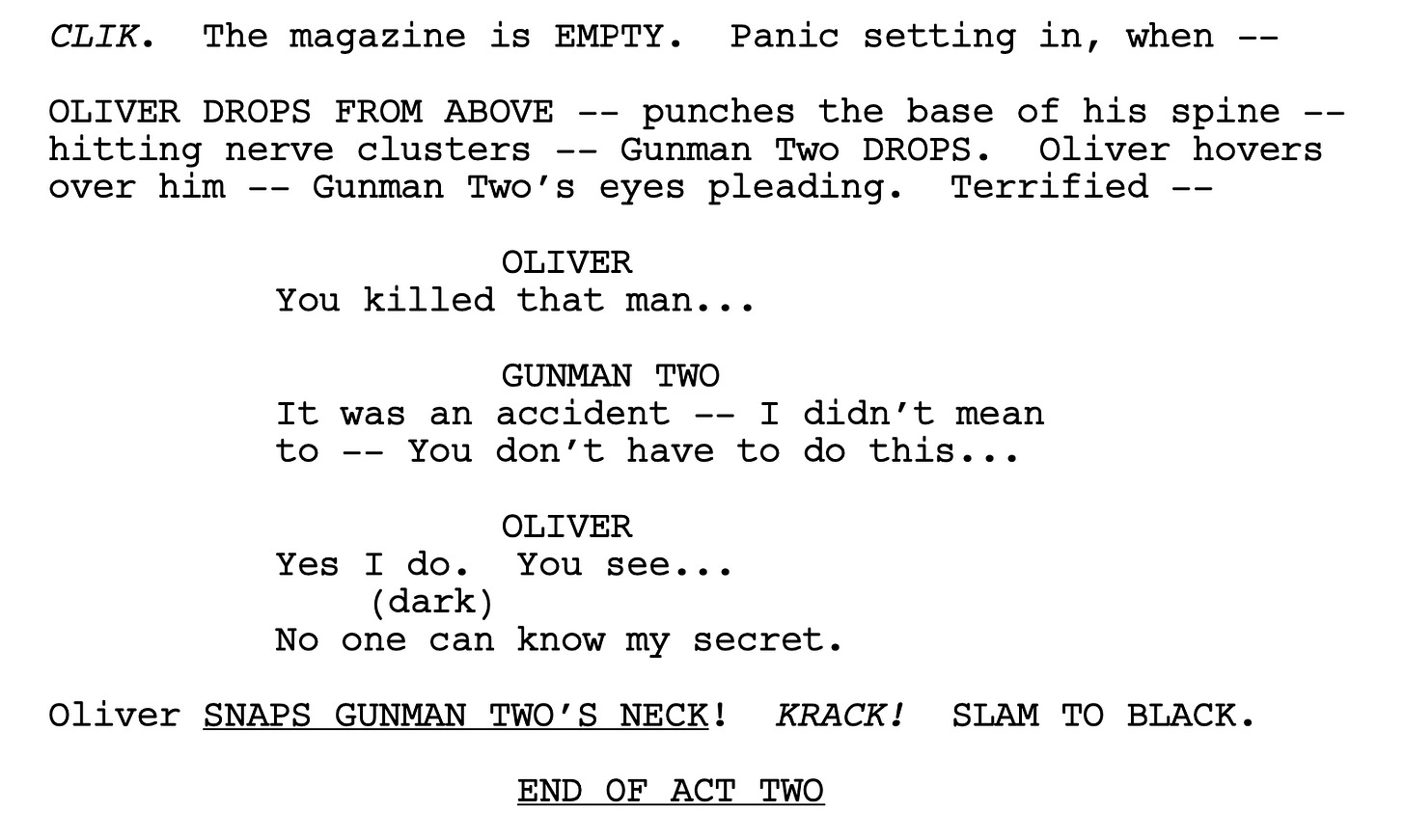
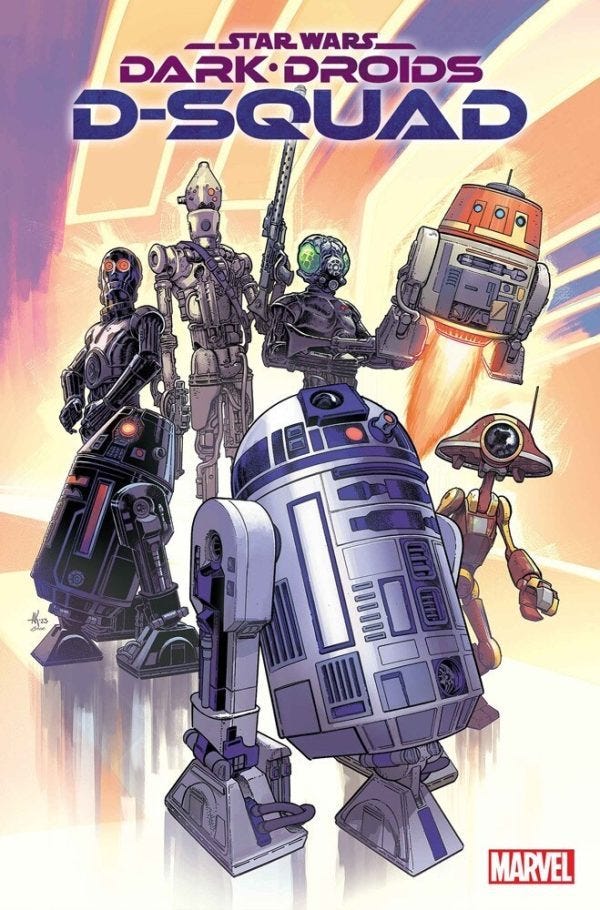
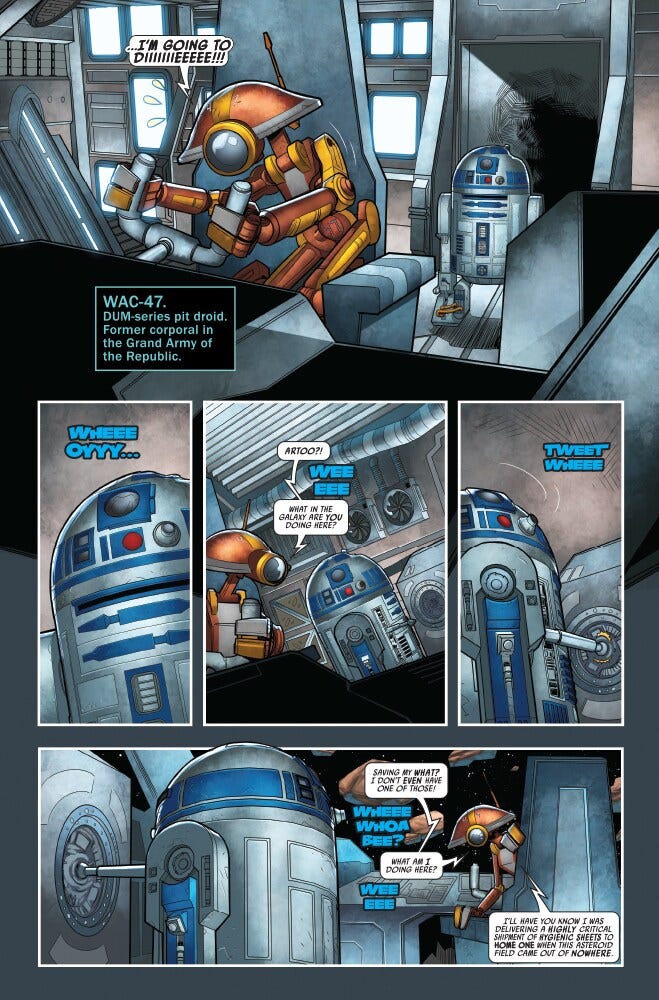
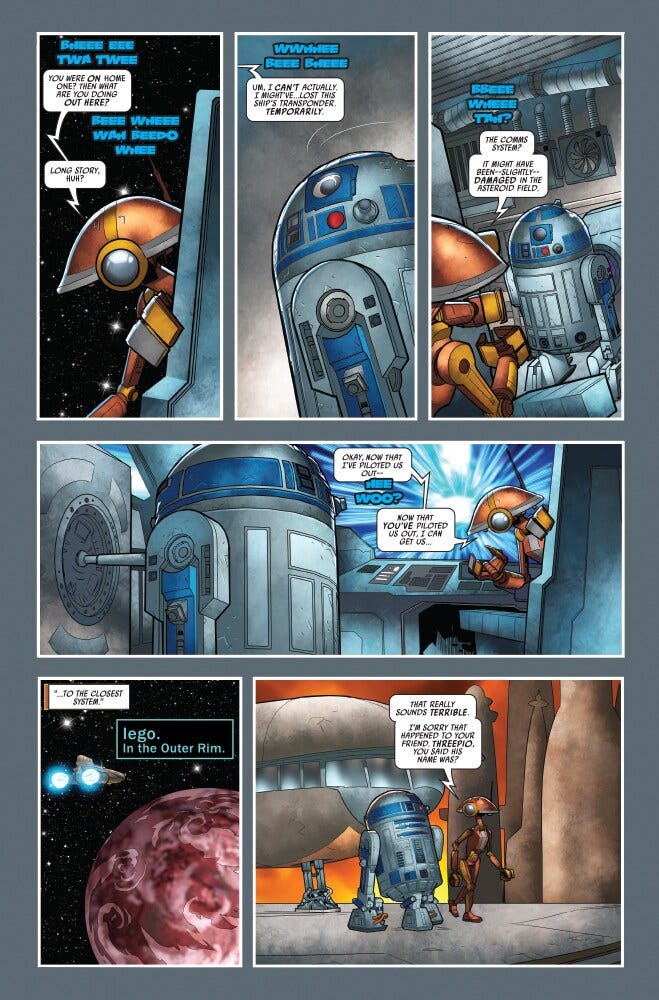
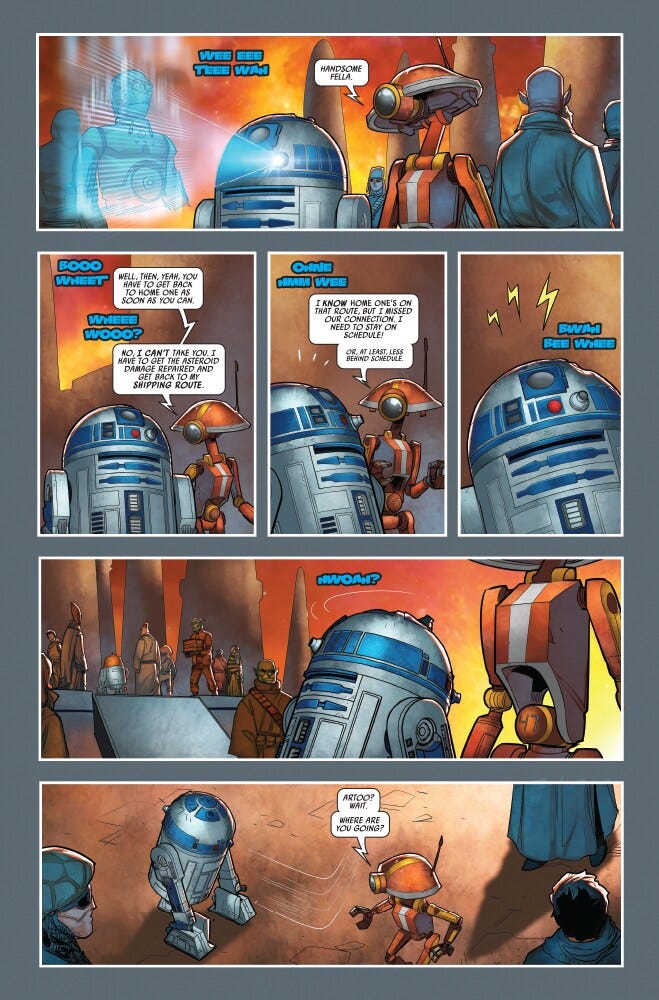
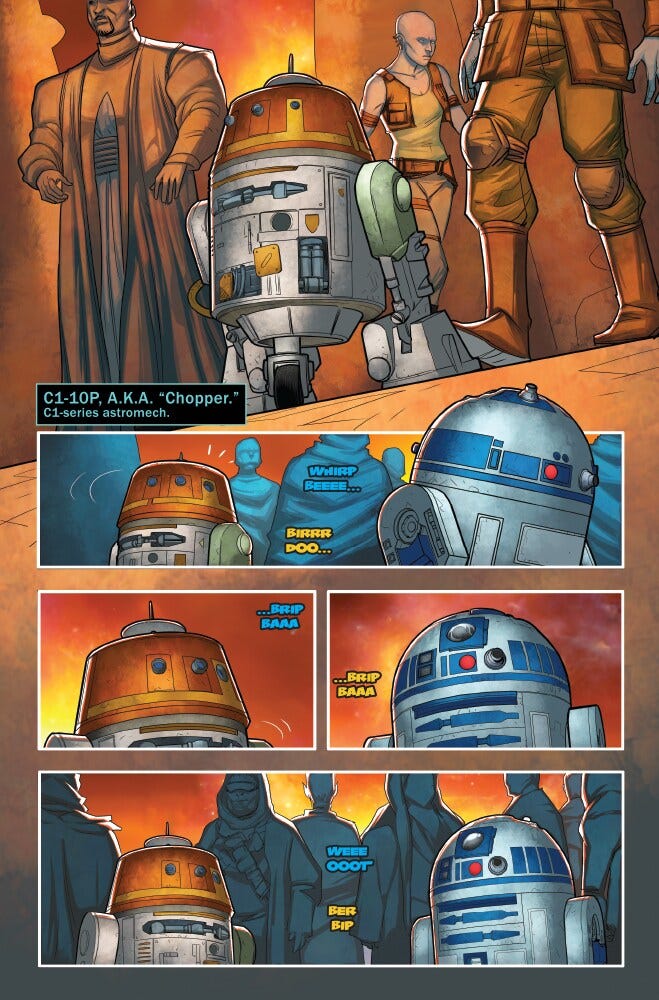
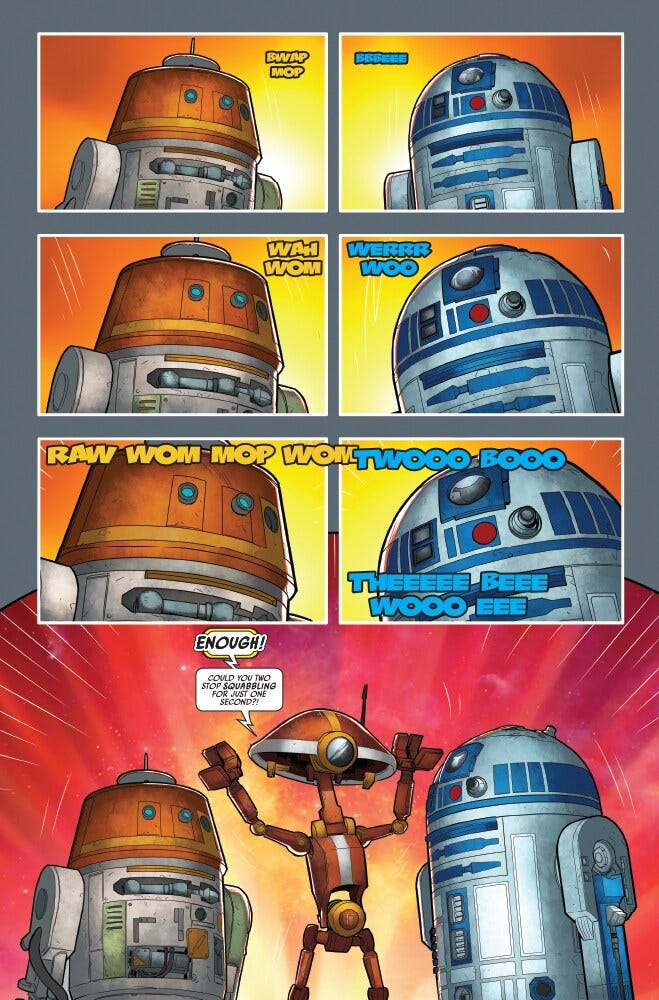
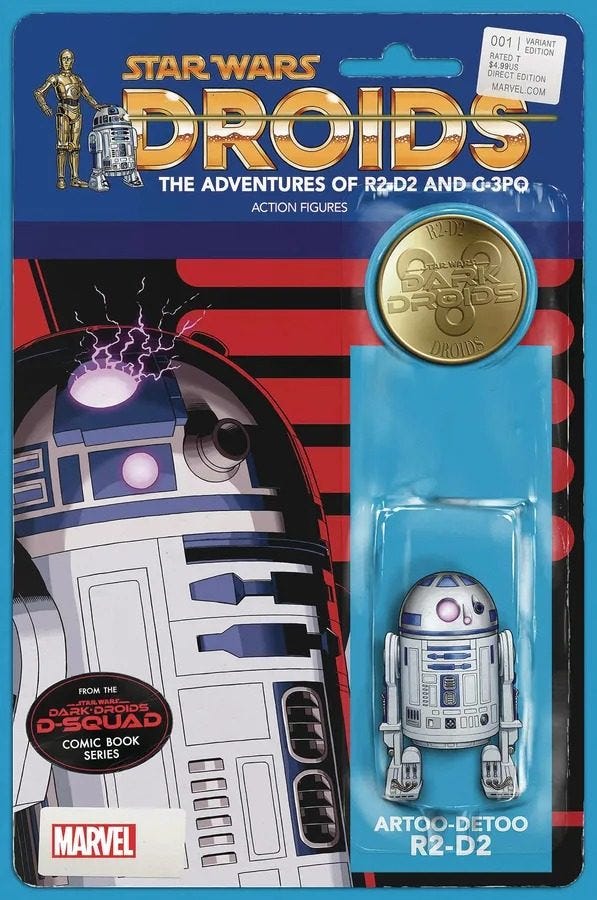
I thoroughly enjoyed your fight scene writing technique via scrip sharing. That’s one of my favorite scenes in the entire series. It’s very interesting to see how well the action translated from page to screen. Thank you for the insight.